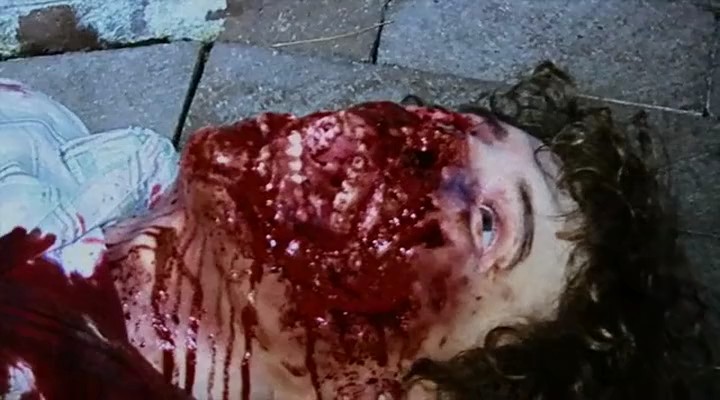Political economics can be its own sub-genre in horror. Just look at the presidential campaign this year.

Unfortunately, no horror movies have come out about actual elections. The Election starring Will Ferrell and Zach Galifianakis came close but, in the end, it was a comedy. Politics are usually reserved as subtle references or metaphors in horror movies. Films like The Crazies, 28 Weeks Later, even Kevin Smith’s Red State and the television series The Walking Dead indulge in the horror of political power and decision, whether in a rigidly structured government or a surviving tribe in a post-apocalyptic world.
With the release of The Bay, brought to you by the producers of Paranormal Activity and Insidious and directed by Barry Levinson, political horror is merged with ecological horror as a small, Maryland town is destroyed physically and mentally by commercial pollution and political oversight in a pseudo-documentary using the “found-footage” medium.
The film is a tell-all documentary by Donna Thompson, a news reporting intern covering the July 4th festivities of the town of Claridge, Maryland, located on the Chesapeake Bay. The community’s summer fun takes a turn for the worst when what looks like a skin disease epidemic causes the local hospital’s lead physician to call the Center for Disease Control. What they learn makes Chernobyl and Three Mile Island look like an easy clean-up. Does it hold water? Will we ever trust the water again?

In the interest of full disclosure, I didn’t drink pure water for two days after watching The Bay. I did the same thing after seeing Cabin Fever. Yeah, go ahead and call me a sissy (or worse), but this is one sissy that’s not going to have giant crustacean parasites bursting out of him.
The film places itself in a very current event, the pollution levels of the Chesapeake Bay. Added into the equation is a very real parasite, Cymothoa exigua. Yes, there’s even a Wiki page on them. This helps lead the viewer into believing the usually unbelievable: steroid contaminated chicken feces mixed with a reactor leak can lead to a parasitic takeover.
At its core, The Bay is a creature film. Unfortunately, the “creature film” genre has been perverted into mostly giant, radioactive, man-eating koala bears and sharks that eat the Golden Gate Bridge. Not that there’s anything wrong with that, but it makes people forget that Jaws was a creature film, too. Yeah, I’m going there.
While the creatures of The Bay may be radioactive like the perverted genre, it still manages to be believable, much like Jaws. This is because both of these movies don’t just focus on the creature or creatures eating us alive. These movies also focus on the characters’ reactions to the madness.
In The Bay, reaction is what keeps the movie going besides the suspense of what “the creature” actually is. We have the reaction of a local television reporter as her feature on crab-eating contests and inflatable pools is suspended by community members breaking out in hives and vomiting blood. We have the reaction of a police officer put in the moral-straining decision of euthanizing a family succumbing to their internal infestation. We have the reaction of doctors to the knowledge that these events could have been avoided if government officials didn’t overlook or ignored a pair of researchers’ findings on the contamination in the Chesapeake Bay. We have the reactions of an All-American family walking into a dead-zone town.

While the bloody special effects work well with the “found-footage” style of the movie, the main feelings of fear and disgust come from the idea that these events can happen. The landing of man-eating zombie chimpanzees from outer space may seem a little hard to believe but, after watching The Bay, the idea that technological waste can evolve enough to mutate a parasite that can infest humans doesn’t seem that crazy.
Horror films usually fall into two base categories: the believable and the unbelievable. Most of the time, horror filmmakers are going for the believable, because there is nothing scarier than something bad that could easily happen to you. This can be done by using real-life elements, or a gripping storyline that, in the film’s world, makes the horror a reality. In The Bay, they use both.
As a creature film, it also expands into a pandemic film as well as a governmental thriller. This may seem like too many sub-genres for one film. Usually this many under-current themes will dilute a film’s energy. This was not the case with The Bay, due to a structured storyline and one of the best uses of the “found-footage” film medium.
Using “found-footage”, the film makes itself seem like less of a fictional movie and more like a documentary, adding to the realism. This helps merge those other thematic elements of governmental conspiracy, ecology, mutation, and psychological torment. The film doesn’t merely move in a linear line. It has multiple story-lines, such as the researchers that first encounter the mutations, the reporter, Claridge’s physician communicating with the CDC, and your average American family. All of these story-lines have their own thematic horror element, and they all, generally, arrive at the same conclusion as to what is happening to this small fishing town. Just think how powerful four different climaxes can be rolled into one.
The only thing The Bay suffers from is the potential to sound too preachy in its concern for the environment and the bureaucracy in government. Then again, a film that puts enough thought into making the physical monster of an eco-thriller a parasite that replaces its host tongue as a metaphor for the victims of disaster losing their voice may have earned the right to preach.
